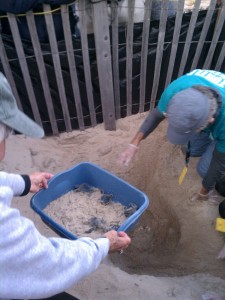
Jim and Jackie pull live hatchlings out of the nest site.
Nest Sitters for Nest #6 gathered Thursday about an hour before sunset to begin excavation of our only green nest the season. The Dilleys began a large sweep over the nest site. Because hatchlings were coming out of the nest from multiple points, the team decided to do a wide approach.
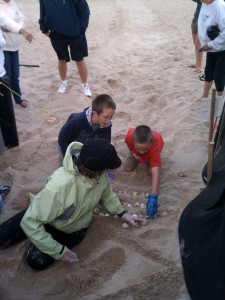
NEST Jrs. sort egg chamber contents.
Sure enough, within nearly minutes of starting, one little hatchling was found just below the sand, a good foot and a half away from the original sink hole. He was immediately placed in a tub and we could tell, he was going to be a strong one! As the dig continued a few more
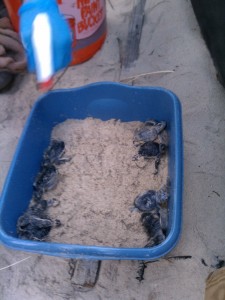
Live hatchlings recovered during excavation.
scattered hatchlings were uncovered until finally the team made it to the egg chamber. As the contents of the nest were pulled and sorted by NEST Jr. volunteers, every once in a while they came across another live hatchling. Once everything was cleared out, lined up, and counted, we recovered a total of 8 hatchlings.
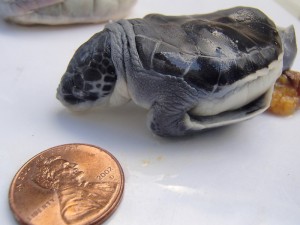
Malformed embryo
Another nest with moderate success (just under half the eggs developed and hatched out). Looking to see if we could find any answers, the team opened some of the whole eggs. Of the 56 unhatchted eggs, 50 of them showed no signs of development. Six of the eggs had developed embryos but most of them had developmental abnormalities such as no eye development, elongated beaks, or malformed carapace (shell). There was also another
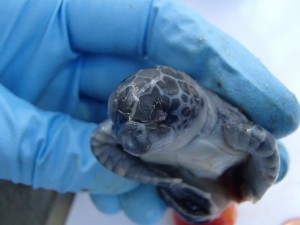
Unhatched embryo with no eye development.
leucistic (all white) embryo. So far this year, nests 1, 3, 5, and now 6 have all had a leucistic embryo found. Finding this embryo helped the team to understand why perhaps more of the eggs did not developl Often when leucistic genes are present, there will be other developmental abnormalities which can cause embryos to stop developing even early on during incubation. While it’s always disappointing to have a nest with limited success, it’s nice sometimes having an answer. Also, the team couldn’t be more thrilled to know that 47 strong healthy hatchlings are well on their way to the gulf stream!
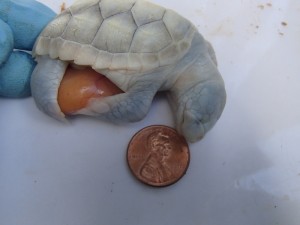
Leucistic Embryo
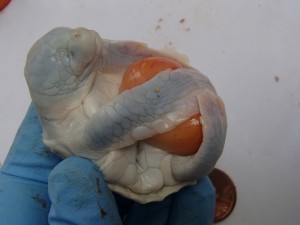
Eye and beak abnormalities.
